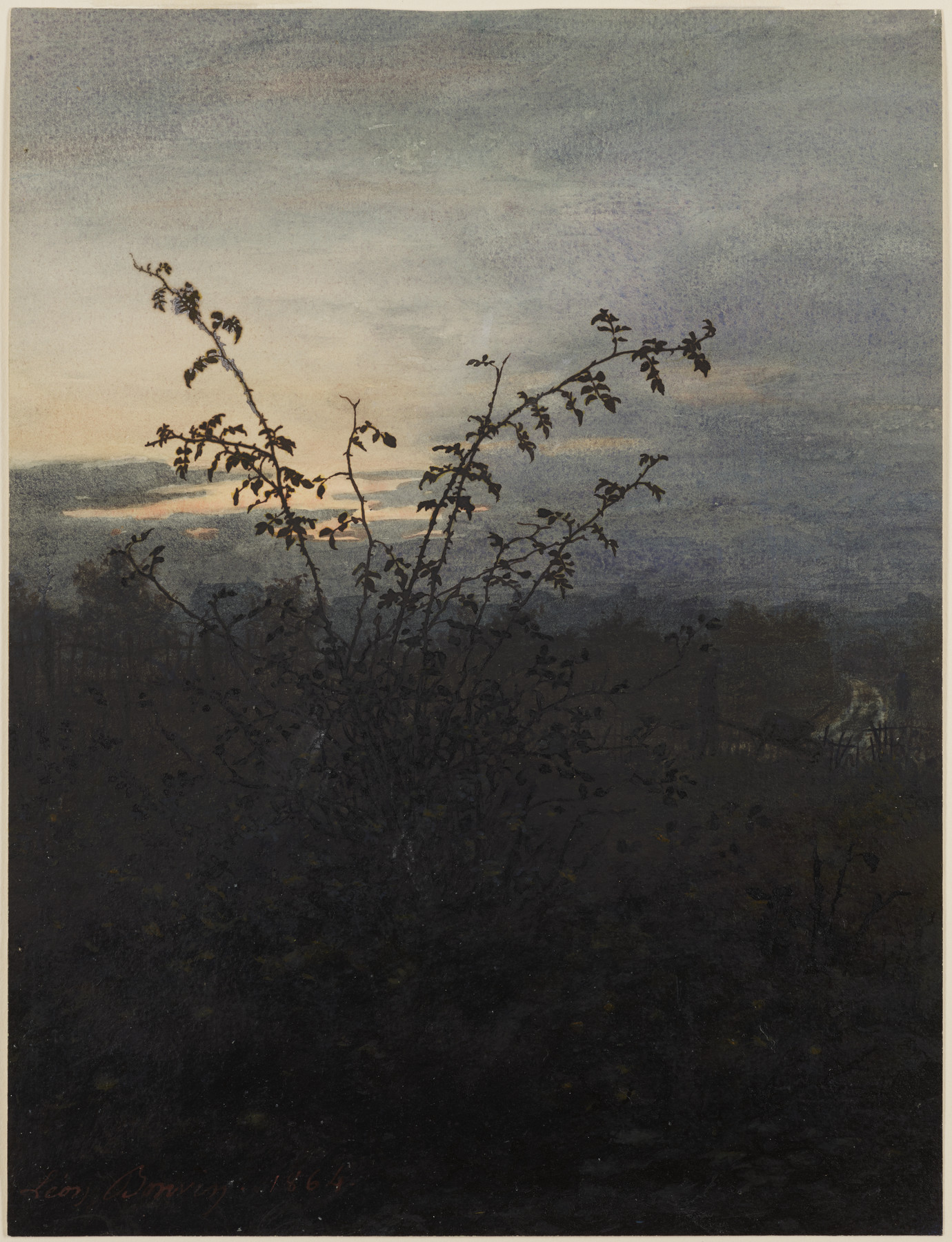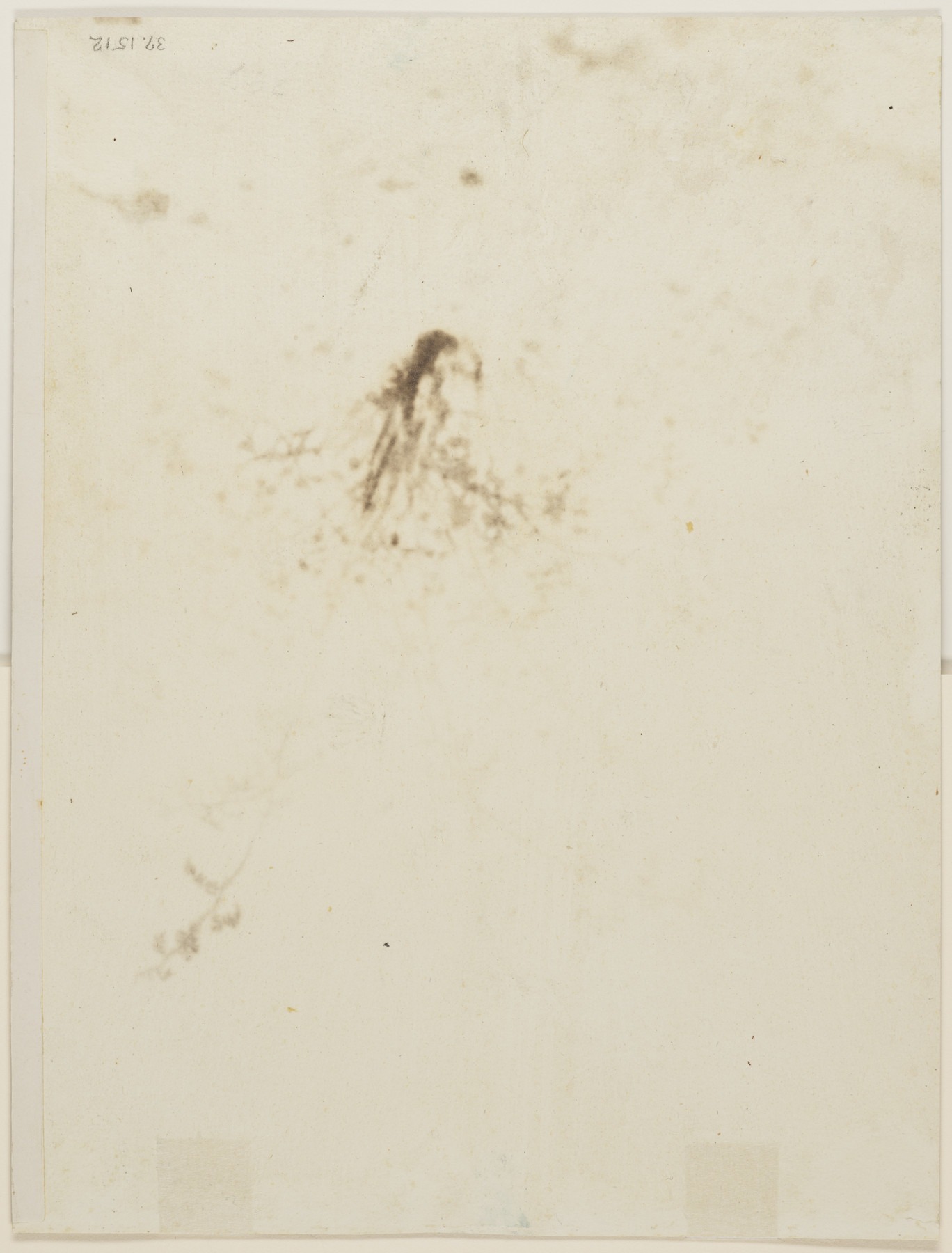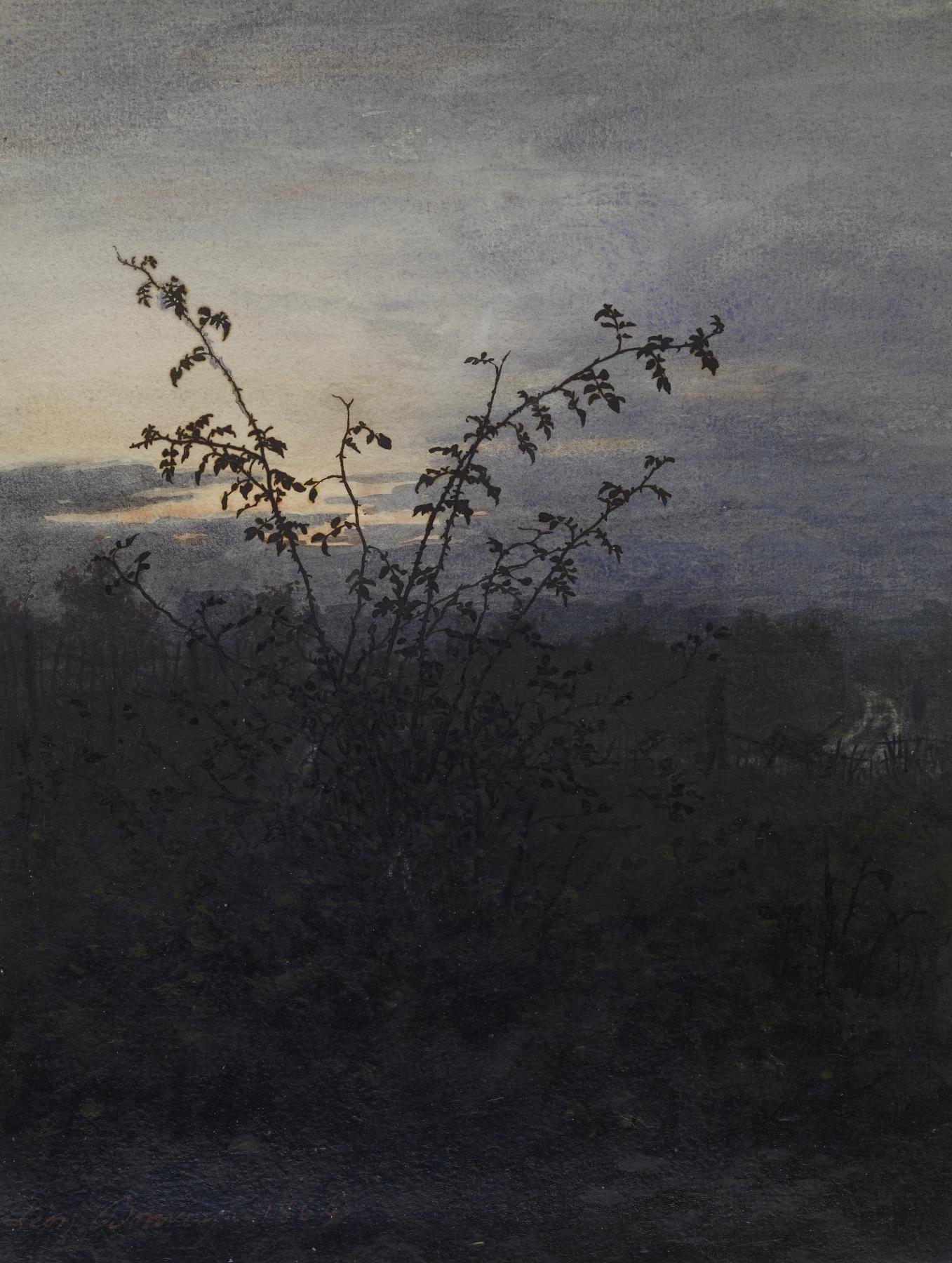Wild Rose Bush in front of a Nocturnal Landscape
(18th and 19th Centuries )
Léon Bonvin was born in Vaugirard, just outside Paris in 1834. Despite displaying great talent in the medium of watercolor he was largely unrecognized by his contemporaries. In 1866 he hanged himself at the age of 32, apparently due to financial difficulties. Working at his family's bar or "cabaret," he sketched and painted watercolors only in his spare moments, yet in the seven year period between 1859 and his death he created numerous exquisite still lifes of flowers and fruits, and subtle landscapes capturing fleeting atmospheric effects. There is evidence that, despite his rural home, Bonvin did have knowledge of the art world in Paris. His half-brother was the better known artist, François Bonvin. In addition Bonvin's still lifes show the influence of Jean-Siméon Chardin (1699-1779), whose work was undergoing a revival in the 1850s and 60s.
During the 19th century an appreciation of Bonvin's work was confined to a small circle of connoisseurs and collectors, most prominent among them William T. Walters, father of Henry Walters, founder of the Walters Art Museum. For much of the 19th century William displayed and stored his watercolors in a deluxe leather-bound album with a specially commissioned frontispiece and tailpiece by the renowned flower painter of the Lyon school, Jean-Marie Reignier (see WAM 37.1501 and 37. 1531). William's collection of Bonvin's work was acquired between 1862 and 1891, and eventually comprised 56 watercolors and one, rare oil; today, this is the largest collection of Bonvin's work in existence.
Inscription
Provenance
Provenance (from the French provenir, 'to come from/forth') is the chronology of the ownership, custody, or location of a historical object. Learn more about provenance at the Walters.
William T. Walters, Baltimore, 1864 (?) [1] or 1867 (?) [2], by purchase [George A. Lucas as agent]; Henry Walters, Baltimore, 1894, by inheritance; Walters Art Museum, 1931, by bequest.
[1] possibly one of seven purchased by Lucas in 1864 (see Randall, Diaries of George A. Lucas, vol. 2, p. 172 and p. 174).
[2] In a diary entry for 1 February 1867 George Lucas records "At Actors & bought aquarelle of Leon Bonvin (Moonlight) for 45 fs" (see Randall, Diaries of George A. Lucas, vol. 2, p. 233). This could refer to this waltercolor, or perhaps more likely, 37.1514. "Moonlight Scene" was likely hanging in Walters' Baltimore townhouse from 1885 (“The Walters Art Collection, Recent Additions – Barye, Millet, Bonnat – Bonvin’s Water Colors,” Baltimore Sun, 1 February 1886, p. 4.), described in R.B. Gruelle's catalogue of the gallery "Notes Critical and Biographical" (1895), p. 189.
Exhibitions
| 2022-2023 | Léon Bonvin (1834-1866). Fondation Custodia, Paris. |
| 2023 | Quiet Beauty: The Watercolors of Léon Bonvin. The Walters Art Museum, Baltimore. |
| 2005-2006 | The Essence of Line: French Drawings from Ingres to Degas. The Walters Art Museum, Baltimore; Baltimore Museum of Art, Baltimore; Birmingham Museum of Art, Birmingham; Tacoma Art Museum, Tacoma. |
| 1994 | A Vanishing Meadow: The Watercolors of Léon Bonvin. The Walters Art Gallery, Baltimore. |
Conservation
| Date | Description | Narrative |
|---|---|---|
| 5/15/1972 | Treatment | re-housed |
| 1/1/2002 | Treatment | examined for exhibition; cleaned; repaired; re-housed; mounted; other |
Geographies
France (Place of Origin)
Measurements
H: 9 7/16 × W: 7 3/16 in. (24 × 18.3 cm)
Framed H: 21 1/4 × W: 16 1/4 × D: 1 5/16 in. (53.98 × 41.28 × 3.33 cm)
Credit Line
Acquired by William T. Walters, 1864 (?) or 1867 (?)
Location in Museum
Not on view
Accession Number
In libraries, galleries, museums, and archives, an accession number is a unique identifier assigned to each object in the collection.
In libraries, galleries, museums, and archives, an accession number is a unique identifier assigned to each object in the collection.
37.1512








